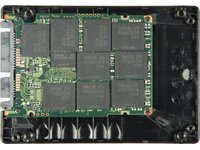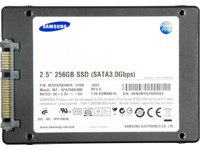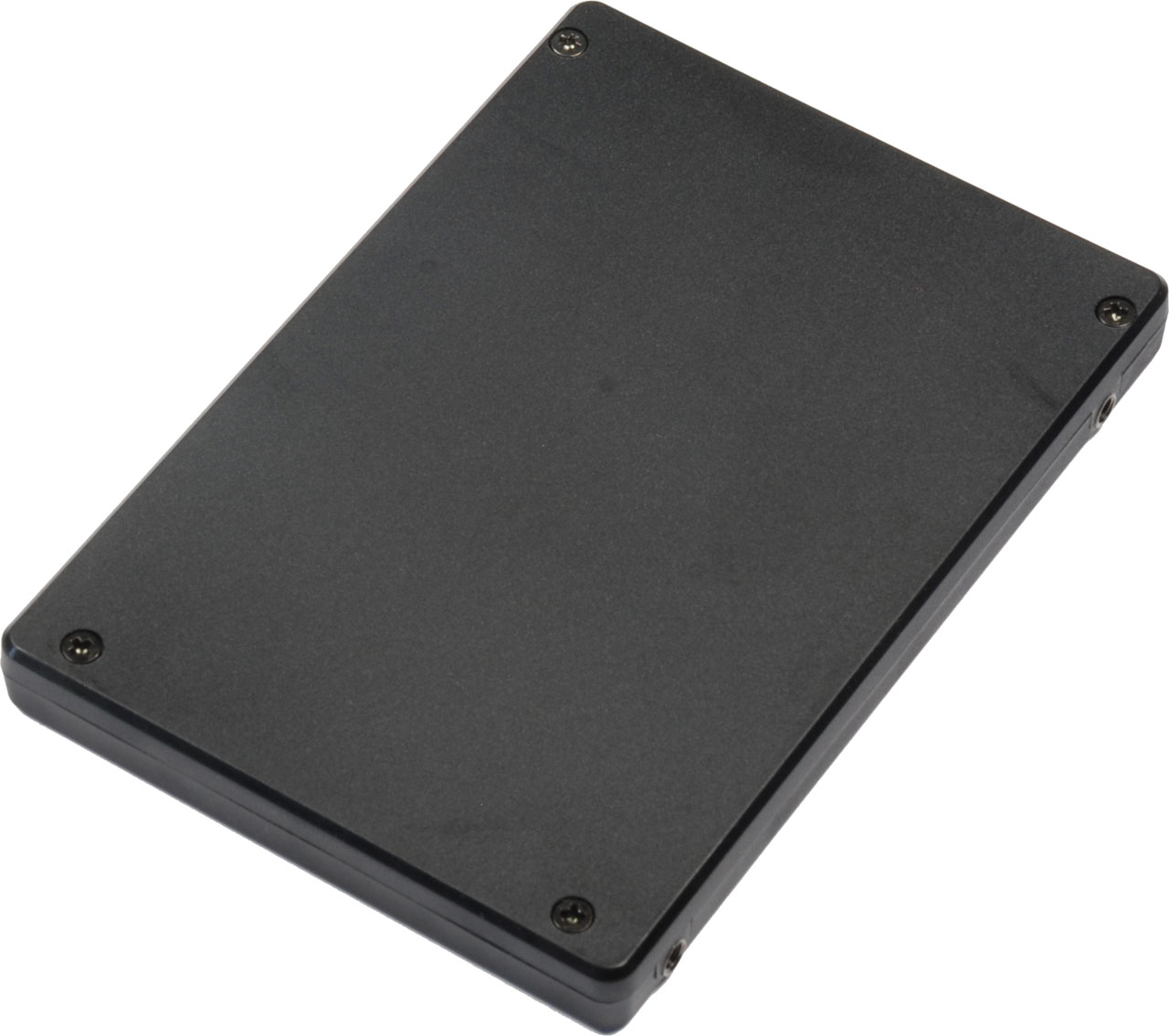How Do SSDs Redefine Storage Performance?
It only takes one or two modern SSDs to outperform business-class RAID arrays with four or eight hard drives. We're running a full comparison and looking at the implications for high-performance systems when you make the transition to flash-based tech.
The SSD: Samsung 470-Series (MZ-SPA256, 256 GB)
Samsung’s 470-series family is the first to implement toggle-mode NAND flash memory that transfers data on the rising and the falling edge of each clock signal, effectively doubling interface bandwidth. As many of you know from memory history, the introduction of DDR SDRAM did almost double memory performance. However, the leap in theoretical performance translated into smaller real-life benefits. Expect something similar to happen with toggle-mode flash products.
The new drives are available in 64, 128, and 256 GB capacities, and they’re rated at 250 MB/s sequential read performance and 220 MB/s for sequential writes. Samsung points at the fact that the height of the device was reduced from 9.5 mm to only 7 mm. In high-density scenarios, this can result in an increase of storage.
Samsung’s controller is a multi-core unit, although we don’t have any additional information about it. The architecture is based on a dedicated DRAM buffer utilized for wear leveling. A 1.5 million-hour MTBF and a three-year warranty are comforting in the consumer space, but practically a minimum requirement for business products.
Samsung’s MSRPs are $699, $399, and $199 for the 256, 128, and 64 GB models, respectively. We already looked at specific performance results and power consumption in our latest SSD roundup.


Get Tom's Hardware's best news and in-depth reviews, straight to your inbox.
Current page: The SSD: Samsung 470-Series (MZ-SPA256, 256 GB)
Prev Page SSD Developments Next Page The HDDs: Fujitsu MBA3147RC (147 GB, 15 000 RPM)